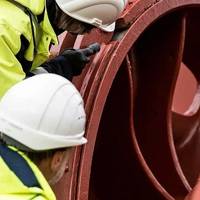DNV, HMD, KSOE Join Forces for Electric Propulsion Digital Test Standards

DNV has signed a memorandum of understanding (MoU) with HD Hyundai Mipo (HMD) and HD Korea Shipbuilding & Offshore Engineering (KSOE) to collaborate on developing new standards for using digital twins to test electric propulsion systems.The collaborative project aims to resolve issues related to the integration of highly complex vessel systems for electric propulsion. Utilizing hardware in the loop (HiL) testing via digital twins of the different systems enables integration tests to be performed both earlier in the process on a much broader and deeper level.Together…
DNV Issues Guidance for Safe Use of Methanol and Ammonia as Marine Fuels

DNV has released a competence standard (ST) for methanol and a recommended practice (RP) for ammonia, to enable crew and shipowners to tackle the safety risks and challenges posed by the introduction of new alternative fuels and technologies through shipping’s decarbonization.While new fuels and technologies are key to achieving maritime decarbonization, their adoption necessitates robust safety and competence frameworks.According to DNV’s Alternative Fuels Insights platform,…
Let’s Set Some Standards for Micro Cargo

As zero carbon cargo efforts are progressing, it is becoming more apparent that the lowest hanging fruit is in the last few miles. This is where a large amount of carbon is expended in delivering small parcels to stores and consumers’ doors.This is particularly apparent in dense pack cities like New York City, where delivery vans clog streets and water crossings. The NYC Economic Development Commission recently issued a Request For Expression of Interest in waterborne micro cargo delivery.





